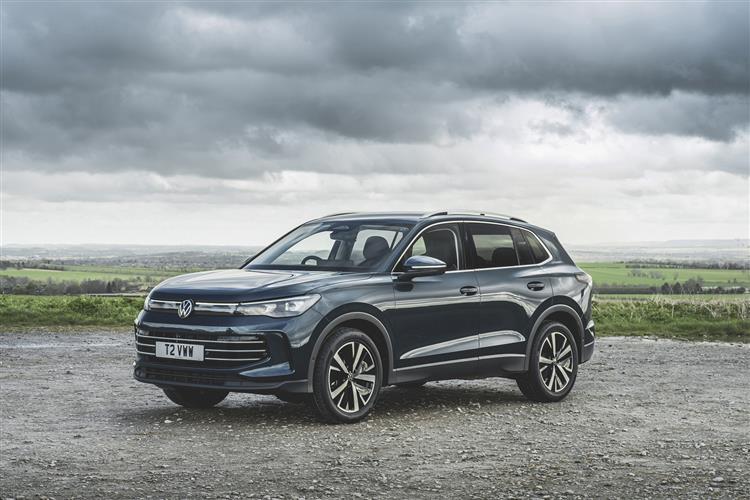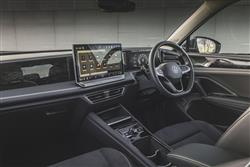TIG PLUG & GO (some text hidden) --NONE--
By Jonathan Crouch
Volkswagen's new generation Tiguan eHybrid offers a much improved PHEV package, thinks Jonathan Crouch
Ten Second Reviewword count: 62
Volkswagen's Tiguan eHybrid uses the mow much improved VW Group PHEV powertrain to deliver a 60 mile all-electric driving range and lots of e-drive options. It's the same sort of thing obvious volume brand mid-sized SUV plug-in competitors offer, but here, the technology's delivered with a bit more polish. In short, there's lots to like if you don't mind the premium pricing.
Backgroundword count: 97
The Tiguan eHybrid didn't arrive until 2020. For years prior to that, the brand teased us with a Tiguan GTE prototype with a clever roof-mounted solar module. The final production version lacked that -and couldn't be had with 4WD or a particularly long EV drive range. With the MK3 Tiguan range, that latter issue's been addressed thanks to the new 1.5-litre powertrain enabled by this SUV's redeveloped MQB evo platform. Like other MK3 Tiguans, this one has a far more digitalised cockpit - and a near-premium price tag. Is it worth it? Let's take a closer look.
Driving Experienceword count: 249
Unlike its rivals, Volkswagen still hasn't got around to designing a Plug-in Hybrid powertrain that can drive all four wheels - perhaps another reason why the TDI diesel version's still hanging around. The eHybrid Tiguan now uses a slightly larger 1.5-litre engine and there are now two versions of it, with either 204PS or 272PS. The key change though, is that both now get a far larger 19.7kWh battery (up from 13.0kWh before), which has nearly doubled EV drive range to 60 miles, enough, Volkswagen reckons, to allow most families to use a Tiguan eHybrid much like an EV. You won't get anywhere close to that EV range figure of course if you use all the performance on offer: the 204PS version makes 62mph in 8.2s en route to 130mph; for the 272PS variant, it's 7.2s and 134mph. As with the old Tiguan eHybrid, there's a 6-speed DSG auto gearbox to replace the 7-speed DSG auto used in the conventionally-engined models. The car always starts off in fully-electrified 'E-Mode', before switching to a 'Hybrid' mode that sees the electric motor and the combustion engine combining together. As part of this setting, you've also a 'Battery Hold' option that will save battery charge until later in your trip; and a 'Battery Charge' setting (in which the battery will be charged as you drive by the TSI engine). There's also a press-on engine-only mode - which you'll need to replicate the 0-62mph times quoted - 8.2s or 7.2s, depending on variant.
To see the full road test text contact us on 0330 0020 227
Pictures (high res disabled)

.jpg)
|
.jpg)
|
.jpg)
| |||
.jpg)
|
.jpg)
|
.jpg)
| |||
.jpg)
|
.jpg)
|

|
Statistics (subset of data only)
Min |
Max |
|
Price: |
£42,000.00 (At 21 Jun 2024) |
£45,000.00 (At 21 Jun 2024) |
CO2 (g/km): |
9 (WLTP) |
11 (WLTP) |
Max Speed (mph): |
134 (272PS) |
|
0-62 mph (s): |
7.2 (272PS) |
|
Electric WLTP-Rated Driving Range (miles): |
360 |
|
Length (mm): |
4539 |
|
Width (mm): |
1842 |
|
Height (mm): |
1660 |
|
Boot Capacity (l): |
490 |
|
Scoring (subset of scores)
Category: Hybrid, Plug-in, Electric & Hydrogen
| Performance | |
| Handling | |
| Comfort | |
| Space | |
| Styling, Build, Value, Equipment, Depreciation, Handling, Insurance and Total scores are available with our full data feed. | |



